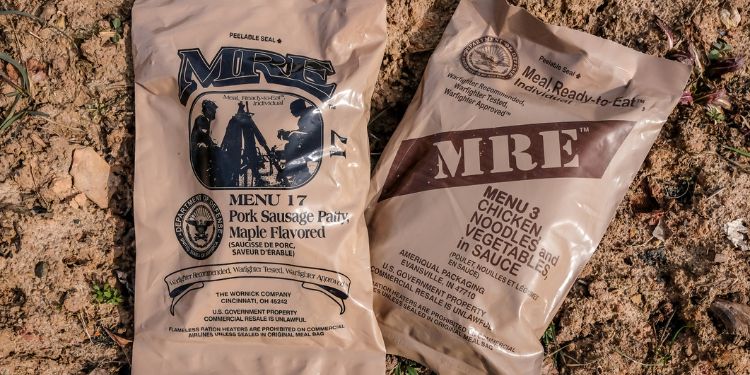Canadian Grid Down: What a Real Blackout Scenario Looks Like in 2025
Imagine this: it’s mid-January in Central Ontario. Temperatures have plunged below -25°C, and you’re wrapped in blankets, watching the snow fall outside your window when suddenly the lights flicker—and then go out. Hours pass, then a full day. The power hasn’t returned, and your home is growing colder with every passing minute. This isn’t the...

Imagine this: it’s mid-January in Central Ontario. Temperatures have plunged below -25°C, and you’re wrapped in blankets, watching the snow fall outside your window when suddenly the lights flicker—and then go out. Hours pass, then a full day. The power hasn’t returned, and your home is growing colder with every passing minute. This isn’t the plot of a dystopian novel. It’s a very real scenario that Canadian households should be prepared for in 2025 and beyond.
Canada’s electrical grid, while generally reliable, faces multiple threats—some natural, others man-made. Cyberattacks on power companies have become increasingly sophisticated, with hackers targeting critical infrastructure to disrupt societies. Imagine a coordinated attack that disables multiple substations across the country. The result? Widespread, prolonged outages.
Natural phenomena like solar flares, also known as geomagnetic storms, can wreak havoc on the electrical grid by damaging transformers and disrupting communications. While rare, these events have occurred before and could strike again. Then there’s the ever-present threat of infrastructure overload. During extreme cold, everyone cranks up the heat, and local systems struggle to meet demand. One cascading failure can knock out an entire region.
The consequences of a grid-down scenario are immediate and severe. Most homes rely on electric furnaces or baseboard heaters. Without power, the indoor temperature can drop dangerously low, especially in older or poorly insulated buildings. Communication lines—cell towers and internet routers—fail within hours, isolating individuals from emergency services and loved ones. Grocery stores shut down, ATMs go offline, and gas stations can’t operate their pumps. Even the municipal water supply may become compromised as pumps stop functioning.
Preparation is not optional—it’s essential. A reliable backup heat source is the first priority. Wood stoves are ideal for rural homes and can double as cooking appliances. In urban settings, propane heaters like the Mr. Heater Buddy provide a safe alternative, as long as they’re used with proper ventilation and a working carbon monoxide detector. Solar power with battery storage is another excellent option, especially for charging essential devices and lighting.
Water becomes another concern quickly. You should store enough drinking water for at least a week—about four litres per person per day. Supplement this with water purification methods such as filters, purification tablets, or boiling capabilities. Cooking without power can be achieved with camp stoves (used outdoors only), rocket stoves, or solar ovens. Finally, keep a cash reserve on hand. Digital payment systems are useless without electricity.
Here’s a comprehensive blackout preparedness checklist you can use to get started:
Blackout Preparedness Checklist
Heating:
- Wood stove or propane heater (indoor-safe)
- Backup fuel supply (wood, propane, kerosene)
- Thermal blankets, sleeping bags rated for extreme cold
- Warm winter clothing for layering
Water:
- Minimum of 28 litres of water per person (7-day supply)
- Water storage containers or bricks
- Water purification method (filters, tablets, or boiling kit)
Food:
- At least one week of non-perishable food per person
- Manual can opener
- Ready-to-eat meals (MREs, canned soup, etc.)
- Portable stove (used outdoors only)
Lighting & Power:
- Battery-powered or hand-crank flashlights and lanterns
- Extra batteries
- Solar chargers or power banks
- Candles and matches (use with care)
Communication:
- Battery-powered or hand-crank emergency radio
- Backup phone charger (solar or power bank)
- Written contact list
Hygiene & Health:
- First aid kit
- Wet wipes, hand sanitizer, dry shampoo
- Prescription medications
- Sanitation supplies (garbage bags, portable toilet or bucket with lid)
Cash & Documents:
- Small denominations of cash
- Copies of ID, insurance, and emergency plans
- Fireproof/waterproof document storage
Other Essentials:
- Fire extinguisher
- Carbon monoxide and smoke detectors with battery backup
- Multi-tool or basic toolkit
By incorporating this checklist into your regular home planning, you’re taking proactive steps to secure your family’s safety, comfort, and resilience during a potentially catastrophic blackout. Winter in Canada is beautiful—but unforgiving when you’re unprepared. Don’t leave it to chance.
What's Your Reaction?































